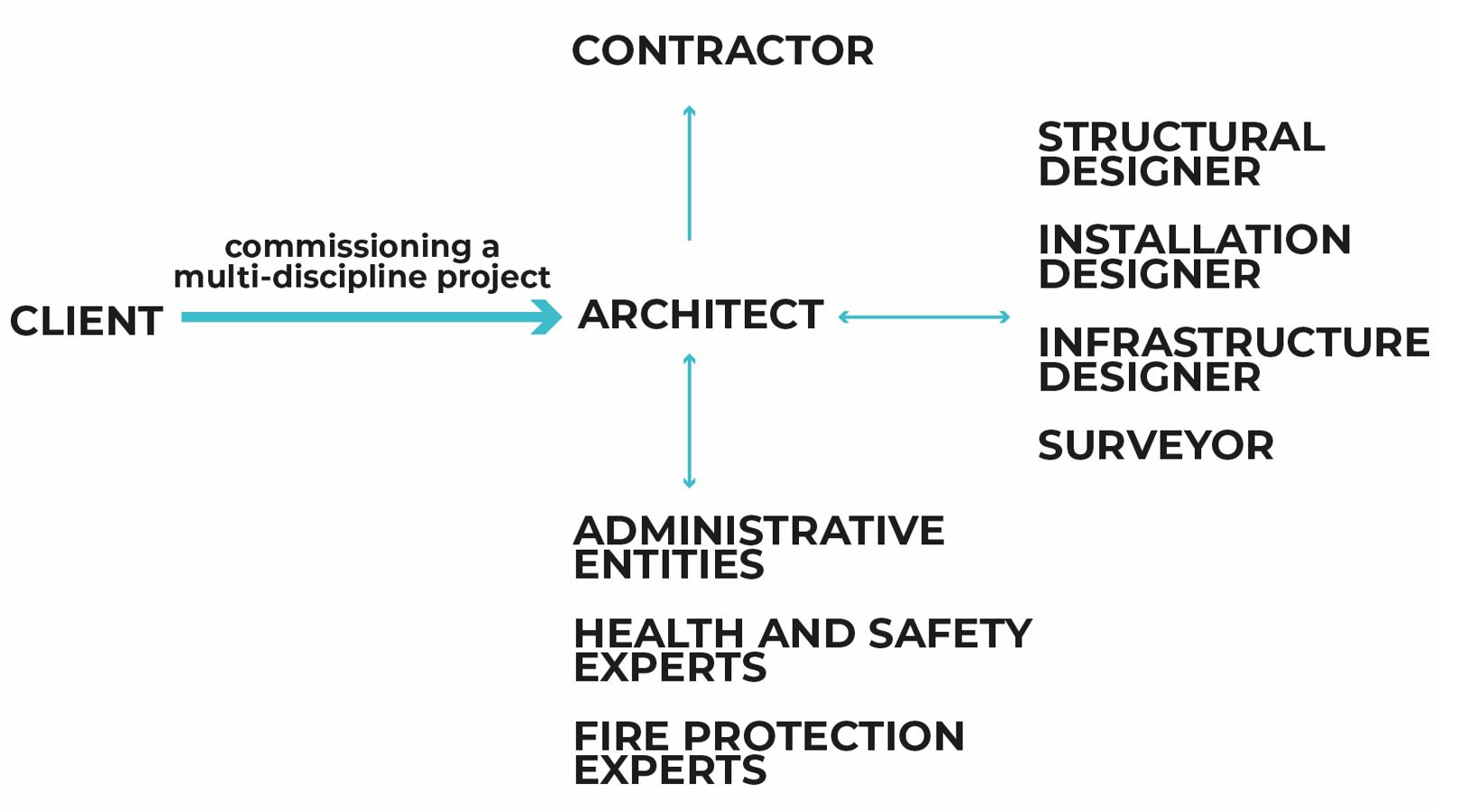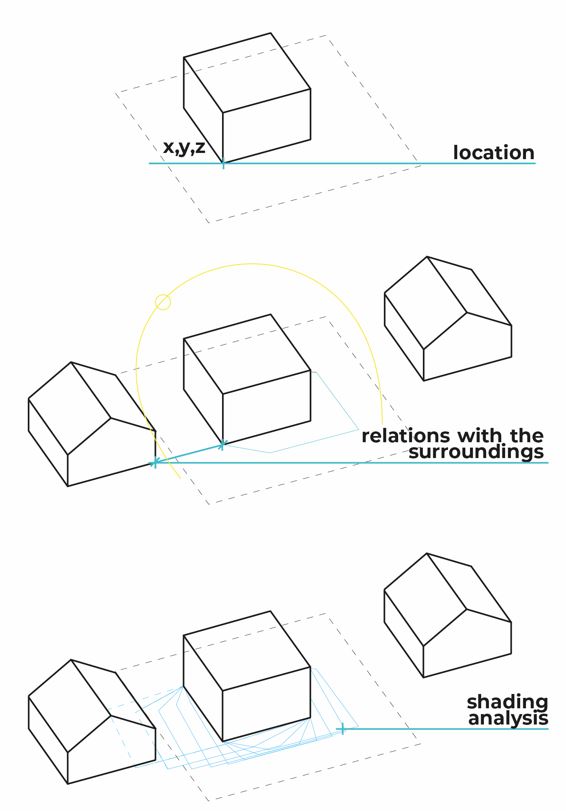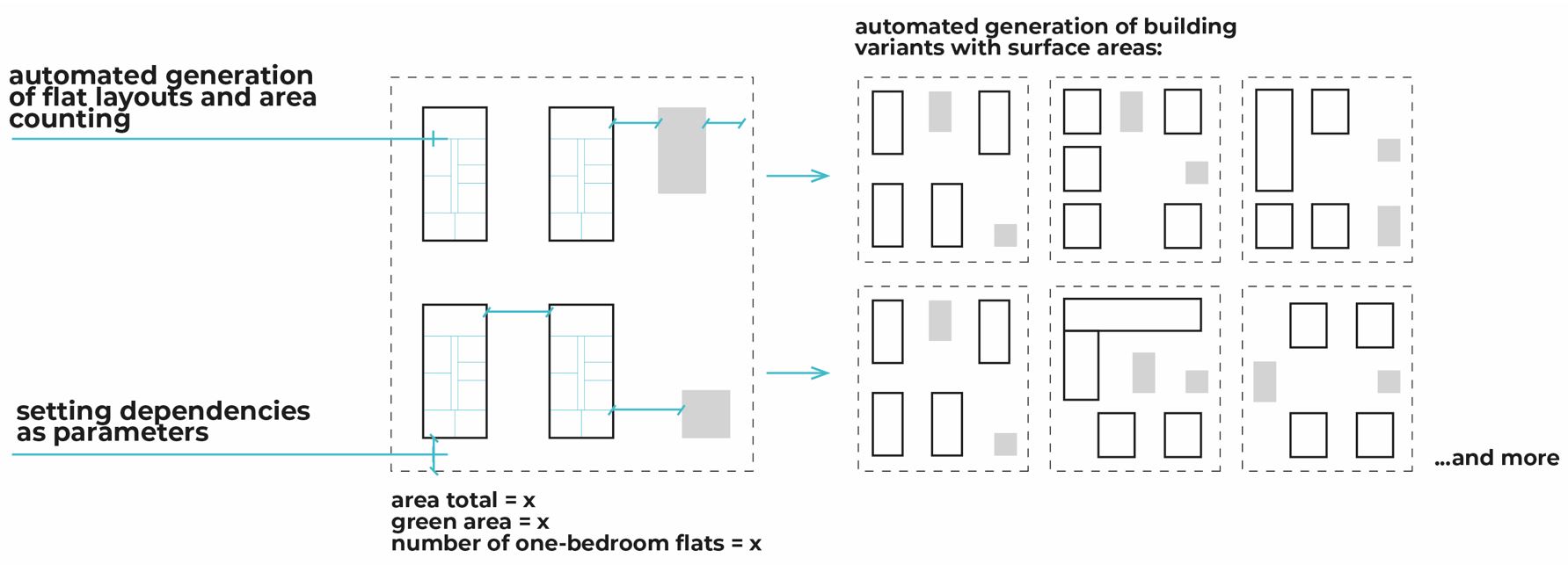How does the use of BIM in architecture look like in practice? The general advantages of using BIM are well known to all of us. In practice, however, when implementing this methodology, there are many aspects that require detailed analysis.
Due to the growing trend in the use of BIM not only in the world, but also in Poland, many architectural offices are in the process of or have undergone its implementation in the last few years. Having the opportunity to work with various types of construction projects, based on my experience, I will present a few examples of how BIM has really influenced the responsibilities and work of architects.
This post was written by BIM Corner’s Guest Author, Celestyna Konderla.
Table of contents
1. How do architectural offices work?
Architectural offices function as multi-branch companies, employing designers of various fields, as branches of large corporations (often in the Design&Build projects), or as small companies with several architects. Architectural studios in Poland are mostly teams of about 10-20 people. In the following article, I would like to focus on this type of organization. It should be taken into account here that in other countries the role and tasks of the architect in the project life cycle may be different, resulting from the specificity of a given market. In this article, I will describe my experience of working in Poland, but in many cases, it will also translate into work in other countries.
The model of work in a small, typical architectural office consists in submitting offers for projects as a whole and outsourcing individual discipline scopes to designers and external companies. In this system, the architect acts as an intermediary between the client and designers of structures, external and internal installations, and infrastructure. Most often, he is indirectly responsible for the coordination, information flow, and quality of the performed scopes, because he is bound by a contract with the client. In this case, the architect acts as a link for all parties in the design phase.
The head of the architecture department conducts several topics simultaneously, alone or with a team of assistants. While developing each topic, at the beginning he analyzes the needs of the client and the end-user, examining the surroundings, capacity, development possibilities, and limitations. As the official representative of the client, the architect most often contacts the administrative authorities in order to obtain appropriate permissions and arrangements. Thanks to the experience and knowledge of local practices, he is able to advise and support the client during the project.
After approval of the initial conceptual solutions, the architectural studio provides drawings or models, on the basis of which other professionals start their work. The architect communicates with different disciplines, coordinates changes, and organizes meetings.
At the implementation stage, the architect is also involved in supervising and supporting the contractor. According to Polish law, he must officially approve any significant changes to the construction design. Also, if the contractor plans to change the material, the selected manufacturer, or some solution from the project, he often consults with the architectural studio.
Responsibilities in an architectural office, apart from design, include knowledge of the current regulations in the field of construction law, soft skills, and good organization of work with subcontractors. Architects are responsible to the client for delivering the entire project. In leading the topic, they are involved in every aspect of the design phase. Therefore, the implementation of BIM in small design studios often starts with extending the duties and training of already employed architects.
2. How does BIM really change the work of an architect?
How has BIM changed the functioning of architectural offices in practice? Below I will describe some real examples based on my own experience:
2.1. Planning
The planning phase of the design process is extremely important. During the preparation of contracts and BIM documents, the information flow is analyzed. The architectural office may agree on the scopes that should not be modified after a given date or after the completion of specific tasks. On the other hand, the very division of the design process into stages allows for the analysis of individual parts of the work and their purpose. Thanks to the detailed arrangements contained in the EIR and BEP and the planning of the design phase, architects avoid many misunderstandings and underestimated jobs.
The schedule of the design phase includes many elements that should be delivered before the first work of designers from other disciplines, such as inventory or arrangements with an appraiser. Starting the design from the disciplines that are the most expensive to modify (e.g. the main structure), and the subsequent introduction of the installations, reduces potential changes resulting from multidisciplinary coordination. Another example of the use of planning is the detail of the communicated scope. If, for example, a client aims to obtain a permit to cut trees, he most often does not need detailed slopes and details in land development, but only a general outline required by the administrative authority.
Experienced architects are familiar with the processes and requirements for a given type of project, which is essential for a realistic schedule. Often, before the implementation of BIM, the offices did not create schedules for each project but based on the existing cooperation and oral arrangements. The lack of a detailed information flow and process plan, agreed with all parties, is a threat to meeting deadlines and the quality of the delivered study.
2.2. Concept and analysis
When developing the concept, architects are faced with the task of designing an object that will not only be functional and will meet the client’s conditions but will also adequately correspond to the surroundings. Analyzes of communication, neighboring buildings, applicable local land development plans, or historical and social aspects are some of the components of the conceptual design.
Before starting the purchase of a specific terrain, the client often orders an analysis of the area for the investment. The use of parametric design allows for faster development of analysis of the terrains’ absorbency, development options, and connections with the environment. BIM technology increases the work efficiency of architects who develop several design variants.
Another example of using BIM in a concept is the preparation of insolation and shading patterns. In Poland, these documents are often required by administrative authorities. By entering information such as location, surroundings, and the position of the object in relation to the directions of the world, we are able to correctly and effectively perform this type of analysis using the BIM model.
2.3. Optimization
Optimizing design solutions is a very attractive concept for the client. We can reduce costs if we skillfully combine the designed scope with the requirements. Architects can get a contract with an appropriate optimization proposal. Contractors, on the other hand, in order to minimize the investment cost, may consider replacing individual materials with cheaper equivalents with the same parameters.
The architectural team spends a lot of time to achieve the optimal solution. Manual development of different variants can be accelerated with the help of parametric design (you can read about parametric design here). An architect using BIM can spend the time saved on more urgent tasks.
2.4. Coordination
Architects must have a spatial imagination. I heard this sentence many times before and during my studies. However, in order to be able to imagine a structure, installations or architectural solutions in detail, they must be understood first. Experience in design, practice on the construction site, but also 3D modeling help in this. By seeing a complicated installation in the model, young designers get to know other disciplines better.
Based on my experience, I noticed that an architectural office was often responsible for multidisciplinary coordination. While the designers started their work taking into account other disciplines, the number of undetected collisions increased during the design phase. Before BIM was implemented in the architectural office, architects were comparing flat drawings manually, which was time-consuming and not very precise.
The introduction of BIM coordinator positions relieved the entire team. The architect can spend more time on his design responsibilities by delegating some of the coordination tasks, especially in cases when conflicts do not affect his design.
2.5. Information exchange
The traditional way of exchanging information between project stakeholders are e-mails, telephone calls, and the transfer of paper-based documentation. This method is still popular in many offices, even after they have started implementing BIM.
Problems with the transmission of information cannot always be avoided, especially when communicating with authorities or administrations. There are surprises, e.g. when the network administrator sends important information to the wrong e-mail address or in a situation where the architect, basing prerequisites on verbal arrangements with authorities, later on, receives different information officially. Fortunately, in Poland, the level of digitization is progressing and more and more matters can be officially settled online.
The use of CDE (Common Data Environment) as a place to store data about the project, findings, and teams, improved communication of the architecture offices with all parties involved in the project. In addition, it saves time on sending documentation to individual persons each time.
One example of how communication has changed is the case of the absence of a team member responsible for contacting the subcontractor or handing over the project to another employee. So far, the architect taking over the project, having a lot of scrap information from various sources, has not been able to efficiently carry out the design phase. Oral arrangements are very risky, yet still occur in project collaboration.
Meanwhile, thanks to the use of CDE, each transfer of the project scope, and each introduced change are registered and stored in one place. Therefore, even in the absence of a given employee, design works can be continued without interruption.
2.6. Making changes
It has become a common belief in the construction industry that during the project it is the architect who constantly introduces unnecessary changes that negatively affect the schedule and costs of the design process. Modifications most often have a domino effect, where small changes result in an unforeseen workload for many people.
Let’s imagine a situation in which we have been working on a project for several weeks and we receive information that a key element disrupting our work to date is changing. Team morale declines as work already done has to be redone, and the time the team spent designing or resolving collisions seems to be wasted. It is worth emphasizing that repeating tasks by a designer that has already been completed is not desirable and can be frustrating.
Changes are sometimes imposed without explaining the reason or introduced without providing the correct information. Cooperation between the various participants of the investment process becomes difficult and ineffective.
An example of such activities may be the modification of the façade by the client by changing the arrangement of windows and doors at the stage when the structural engineer completed the design of prefabricated walls. For the designer, a slight shift of the opening in the architecture means that the calculations will need to be redone.
Another example would be a change in the main structure when the sprinkler system designer had already released his models. Redesigning such an installation may result in delays in other work and additional costs. Administrative decisions may also affect unnecessary work, e.g. when the road designer early prepared a model and documentation of the exit in high detail, and after agreeing with the road manager, the location of the exit must be changed.
In some situations, the cost of implementing the change exceeds its benefit. Meanwhile, using BIM modeling, many of these events can be captured at an earlier stage or changed more efficiently. BIM helps you respond to such changes through regular coordination meetings, process planning, parametric design, and automating tasks that were previously done manually.
3. What would I like to know when I started to work as an architect?
Architecture graduates today rarely have sufficient knowledge of BIM before entering an apprenticeship. And although more and more universities introduce additional subjects and postgraduate courses that focus on this methodology, they are still missing in the basic curriculum.
A good step is to introduce practical design activities combined with other courses. Thanks to this, architecture students experience difficulties related to teamwork, communication, conflict resolution and design issues, not only from the point of view of an architect. Understanding the possibilities of designing and managing the project and its different phases significantly increases the value in the labor market. In addition, it allows you to understand the reasons for design decisions, which are not always clear to young engineers. In my opinion, it is one of the most important experiences in this profession.
The most valuable knowledge is gained through practice, often passed on by experienced specialists. It can take years to learn and work out the right patterns and good practices and is often subject to constant change and improvement.
Standards, if any, vary from office to office. The unification of design and management, at the level of the entire country, is an important element for the development of BIM in architecture.
4. Summary of BIM in architecture
BIM offers enormous possibilities and it seems that there is no turning back from this methodology. However, depending on the type of investment process, facility, legal conditions, and many other factors, the level of its use differs in many architectural offices.
The implementation of BIM is certainly a big step towards technological development and the way of thinking about the entire project life cycle. The construction industry is changing, and architects can benefit from it on many levels, as long as they are able to properly use the opportunities that come from working in the BIM methodology.













Great insight on practical experience using BIM and recommendation to students of Architecture. In addition I think it is also important to look into IT based fundamentals as part of things to know for Architecture students.
Thank you for your opinion! I agree, such knowledge would definitely be useful for students. The requirements at work are getting higher and higher, and young architects are mostly learning the software themselves.